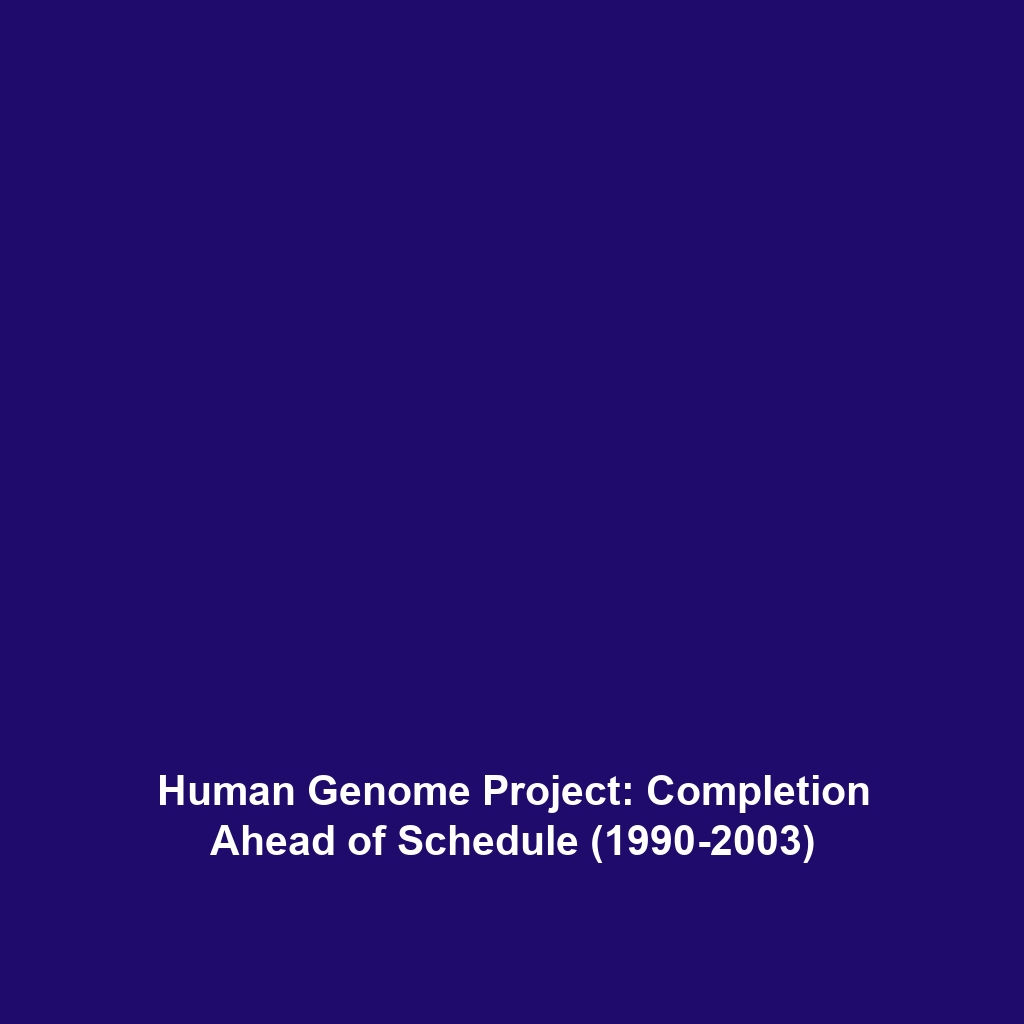The Timeframe of the Human Genome Project: Officially Began in 1990 and Completed in 2003
Introduction
The Human Genome Project (HGP) represents a monumental scientific endeavor that aimed to map and understand all the genes of the human species. Officially inaugurated in 1990 and successfully completed in 2003, ahead of schedule, the HGP has significantly shifted the landscape of genetic science. This project was not only a seminal moment in genetics but also laid the groundwork for numerous innovations in biotechnology, medicine, and beyond. Understanding the timeframe of the HGP is crucial for appreciating its profound effects on scientific research and health care.
Key Concepts of the Human Genome Project
The Human Genome Project stands as a cornerstone in genetic research, embodying several vital concepts:
- Genome Sequencing: The process of determining the complete DNA sequence of an organism’s genome.
- Mapping: Identifying and recording the locations of various genes in the genome.
- Collaborative Research: Involving international scientific collaboration across various institutions and disciplines.
- Bioinformatics: The use of software and computational tools to manage and analyze the vast amounts of data generated by genomic studies.
These principles highlight the ambition behind the HGP, showcasing its comprehensive, global effort to advance our understanding of human genomics.
Applications and Real-World Uses
The timeframe of the Human Genome Project provided a robust foundation for several practical applications in healthcare and biotechnology. Key applications include:
- Personalized Medicine: Tailoring medical treatment based on individual genetic profiles.
- Genetic Testing: Early detection and diagnosis of genetic disorders.
- Pharmacogenomics: Understanding how genes affect a person’s response to drugs.
- Gene Therapy: Innovative approaches to treat or prevent diseases by correcting defective genes.
These applications underscore the essential role of the Human Genome Project timeframe in advancing genomics and improving patient outcomes.
Current Challenges in the Human Genome Project
Despite the achievements during the Human Genome Project’s timeframe, challenges and limitations persist:
- Data Privacy: Concerns regarding the security of genetic information.
- Ethical Issues: Ethical implications surrounding genetic modification and testing.
- Access to Technology: Disparities in access to genomic technologies across different regions.
- Scientific Misinterpretation: The potential for misinterpretation of genetic data leading to misinformation.
Addressing these challenges is essential for the responsible advancement of genomic research.
Future Research and Innovations
Looking ahead, the future of the Human Genome Project holds many promising innovations, including:
- Next-Generation Sequencing: Technologies that significantly reduce the time and cost of sequencing genomes.
- CRISPR and Gene Editing: Advances that promise precise genomic modifications.
- Artificial Intelligence: Leveraging AI to analyze complex genomic data and improve predictive analytics.
- Global Collaborations: Further international partnerships aimed at understanding genetic diversity across populations.
Conclusion
The Human Genome Project’s timeframe, commencing in 1990 and completing in 2003, marks a pivotal era in the history of science. Its significance extends beyond its completion, influencing numerous facets of healthcare and genetics today. As we strive toward future innovations, recognizing and addressing ongoing challenges will be key to optimizing the benefits of genomic research. To learn more about related topics, explore our pages on genomic sequencing and personalized medicine.
